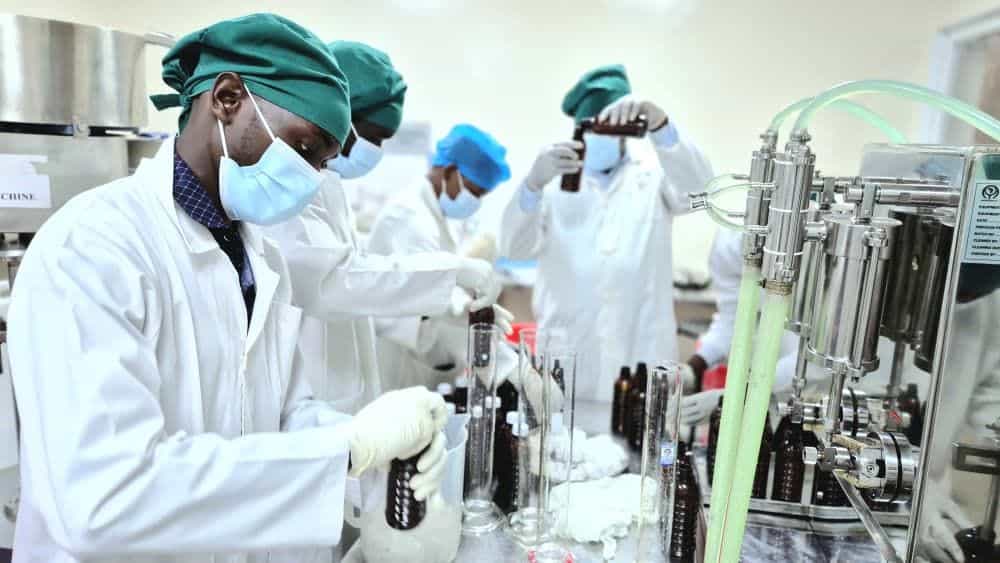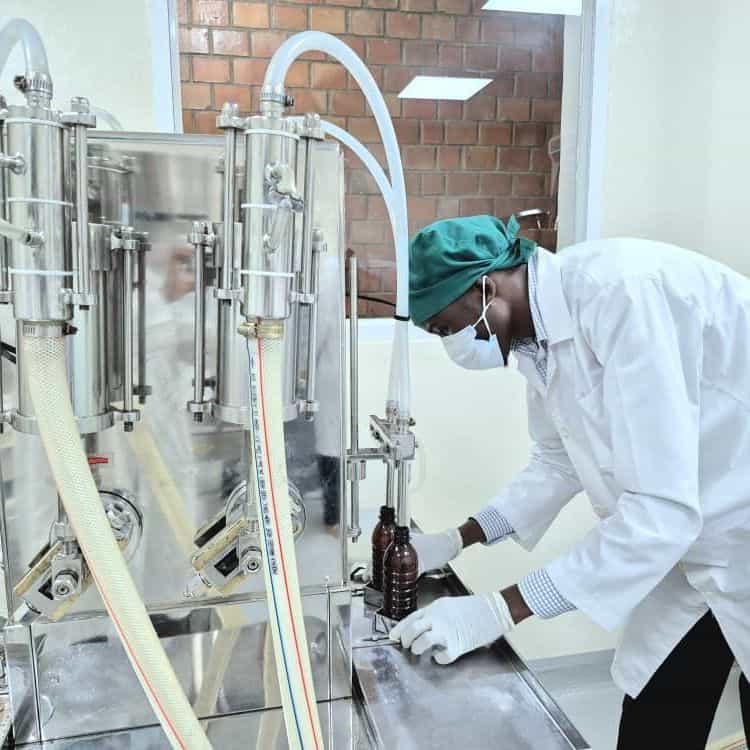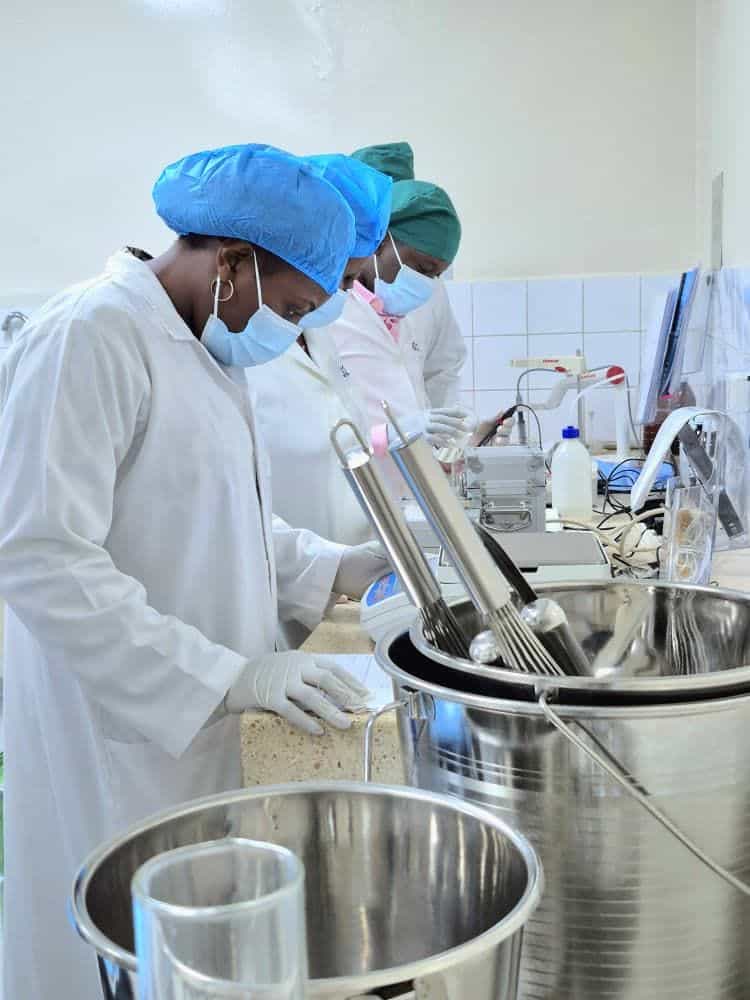Morphine Production Unit


Pioneering Oral Liquid Morphine Production
For over 30 years, Hospice Africa Uganda has been at the forefront of pain relief through the reconstitution of oral liquid morphine—a vital part of our commitment to compassionate palliative care. What began as a simple “kitchen sink” method with morphine solutions made up in a plastic bucket has evolved into a state-of-the-art manufacturing unit, generously donated by the American Cancer Society. This facility ensures the highest standards of pharmaceutical manufacture of safe and quality opioid medicines for the patients who need it most.
Our Morphine Production Unit operates in partnership with the Ministry of Health and under contract with the National Medical Stores (NMS) to supply all accredited health facilities across Uganda. We are fully licensed by the National Drug Authority as a local manufacturing facility, and our operations adhere to current Good Manufacturing Practices (cGMP).
Oral liquid morphine is packed in two different strengths;
5mg / 5mls (green colour)
50mg / 5mls (red colour).
We produce oral liquid morphine in two strengths:
- 5mg/5ml (green label) – available in 250ml and 500ml bottles
- 50mg/5ml (red label) – available in 250ml bottles
This essential medication is supplied to the National Medical Stores, Uganda’s government-run medicines management authority, and distributed nationwide through Joint Medical Stores to public and private health facilities respectively.
Most importantly, oral liquid morphine is provided free of charge to all patients who need it in Uganda. This is made possible through the ongoing support of the Government of Uganda, which allocates funding to ensure the availability of this life-changing medication.
.jpg&w=3840&q=75)





Morphine being produced at the Hospice Africa Uganda site in Makindye

A Sip Of Morphine: Uganda's Old-School Solution To A Shortage Of Painkillers
Nurith Aizenman, reporter for US public radio station NPR, writes about how oral morphine has revolutionised pain relief across Africa. The article was published in November 2019 and you can read or listen to the report on the NPR website by clicking below.